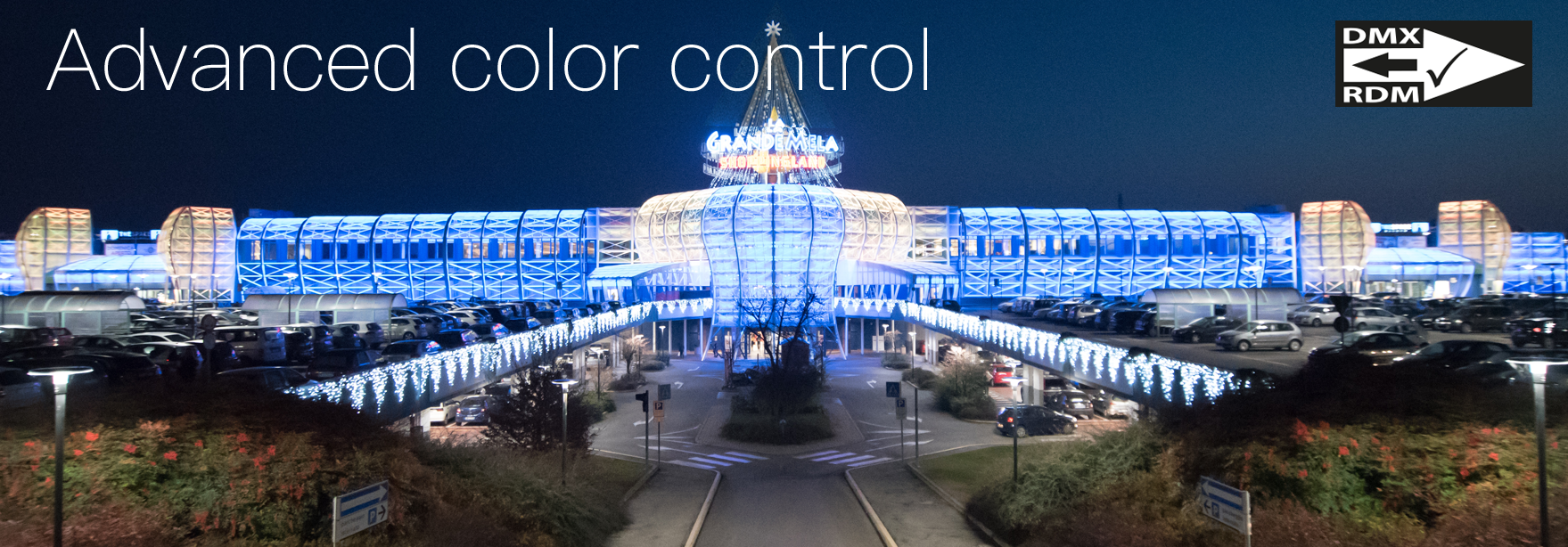The DMX (Digital Multiplex) protocol, also known as DMX512 or DMX512-A, is a digital communication standard used for control lighting in the professional and on the scene.

The DMX technology is able to control up to 512 devices or distinct parameters (this large number allows you to control complex systems). For higher applications, it is necessary to introduce the concept of DMX universes: DMX512 networks to which a group of channels is assigned that reaches a maximum of 512. For DMX universe we mean a connection line from the controller and all devices associated with that cable. Most recent DMX consoles support more than one DMX universe, each of which must be wired independently.
FIND OUT MORE ABOUT DMX TECHNOLOGY
Ideal uses and applications for the DMX standard
The DMX standard has found use and widespread in complex environments such as theaters, conference rooms, night clubs and festivals where the light sources to be checked are numerous and the complex special effects. For several years now, the DMX standard has also been introduced in the management of consumer solutions such as public buildings and shopping malls for applications that include RGB, color and light temperature control.
The DMX protocol is particularly suitable for applications that use LED technology in which special effects and lighting management are conceived as a design element to emphasize particular architectural features.
How the DMX standard works
Each lighting fixture compatible with DMX technology has a DMX input and a DMX output, therefore it is a master-slave system in which the lighting controller acts as a master and the lighting fixture acts as a slave to the controller and as a master to any subsequent lighting fixture.
FIND OUT MORE ABOUT DMX TECHNOLOGY
What are the advantages of the DMX standard
The spread of DMX technology is largely attributable to the simplicity of use combined with its robustness. The cables suitable for connecting DMX devices are in fact extremely resistant and do not suffer damage and performance degradation.
